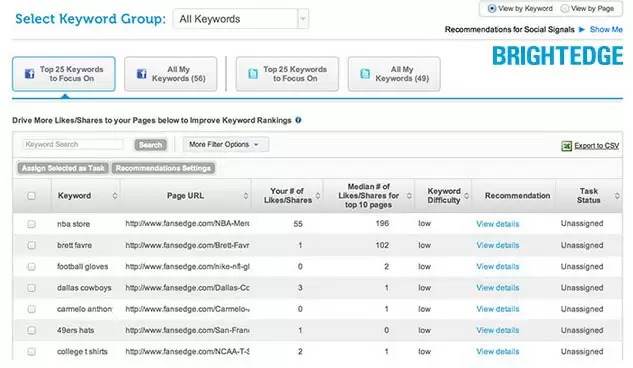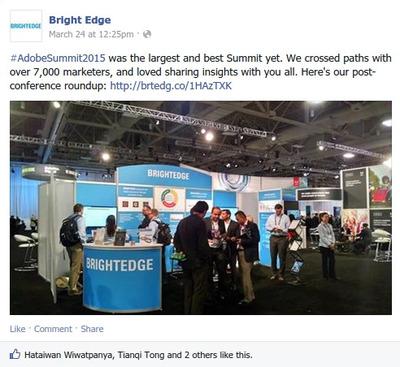Over the past few years, the value of social media platforms has exploded. When Facebook began as a social platform for college students in 2004, few people anticipated that—just over a decade later—social media platforms would be such an important factor in online marketing and search engine optimization.
Companies have found social media platforms to be excellent places to acquire customers and build brand loyalty. An estimated 77% of B2C companies and 43% of B2B companies have found customers through Facebook. Another 34% of marketers have sourced customers from Twitter.
Social media platforms have become the world’s water cooler, where people exchange ideas and discuss what they want to see from their favorite brands. Social media marketing, then, is the art of using that information to connect with potential customers, build relationships, and ultimately grow companies to new heights. Social Media is a channel to find and develop influencer marketing strategies.
Understanding the different social media platforms
Social media is not one-size-fits-all. There are different audiences that frequent the various social media platforms, and they each expect to interact with different types of content from their favorite brands. It is important to take the different atmospheres to heart and allow them to guide everything from a company’s profile to its target audience. Brands should use their buyer personas to guide the types of content they promote and the social media platforms where they need to focus their efforts.
Facebook - estimated 1.3 billion active users
Facebook received its start as a social site for college students. Although it has expanded far beyond its original restrictions, it has maintained its more light-hearted atmosphere. Companies tend to fare best when they post a variety of different types of content, from fun memes to informational posts that educate readers and encourage informative conversations. It is generally best to keep posts under 250 characters — if they get too long, you risk losing engagement. Include images and ask open-ended questions to inspire conversation.
Twitter - estimated 288 million monthly active users
It is best to think of Twitter as one giant conversation. Posts have to be less than 140 characters, but it is best to keep them under 120 so that your posts can easily be ‘retweeted.’ You will want to use #hashtags to call attention to the topics you are discussing, so that your posts are easily searchable. Pictures can also be fantastic for attracting attention on Twitter.
LinkedIn - estimated 300 million active users
LinkedIn is the network for professionals, and that is reflected in everything about the platform. The people on the platform are most interested in content that relates to them professionally, so any articles you post should take this into account. You want to promote pieces that encourage industry-related thought and conversation.
Google+ - estimated 300 million active users
When it comes to local SEO, Google+ is golden. It is generally recommended that brands publish a variety of different types of content on this platform as well. Images, educational content, and even videos can all perform well.
Understanding social media platforms and site performance
Social media platforms offer brands the chance to connect directly with their audience and leverage that connection to move them through the sales funnel. Success with social media platforms require more than just establishing a profile and posting a few times per week. The purpose of a social media marketing campaign is to build a strong community around the brand that will:
- Establish your company as an industry leader
- Encourage followers to trust and then buy from you
- Expand your brand reach
- Build brand loyalty
To accomplish these goals, it’s essential to devote time to building your social profiles and marketing campaigns — as well as monitoring their success. Keywords should be used on the social profiles because they are indexed by Google, but also because it will make it easier to find your brand through internal searches on-platform.
Programs like BrightEdge make it easy to see how well a social campaign is performing and how successfully it is interacting with SEO. You can easily track social SEO metrics, such as applicable keywords, to see where your pages can be improved to attract more visitors and improve your social media success.

Although many companies like to track basic social media metrics, such as the number of followers on various social media platforms, it tends to be far more beneficial to track metrics that look more closely at the level of engagement those followers have with your page. Look at statistics such as:
- How often your followers comment on and share your content
- The number of likes your content receives
- The number of people who enter the sales funnel through social media sites
- How often people who find your company through social media end up converting

These are the types of statistics that will give you insight into how well your social media is expanding your brand reach. As your campaign progresses, you will be able to use the social media platforms to drive more organic traffic toward your content, which helps boost your brand and site reputation. In turn, this will improve SEO value and position your company higher in search rankings.
Social media marketing is a fantastic tactic that gives brands the platforms they need to engage with the modern digital audience. Considering that over 70% of online American adults use some form of social media, these social media platforms offer an unparalleled opportunity to interact with potential customers. Properly leveraging these sites can help you take your marketing campaigns further, connect with new consumers and expand your brand reach.


